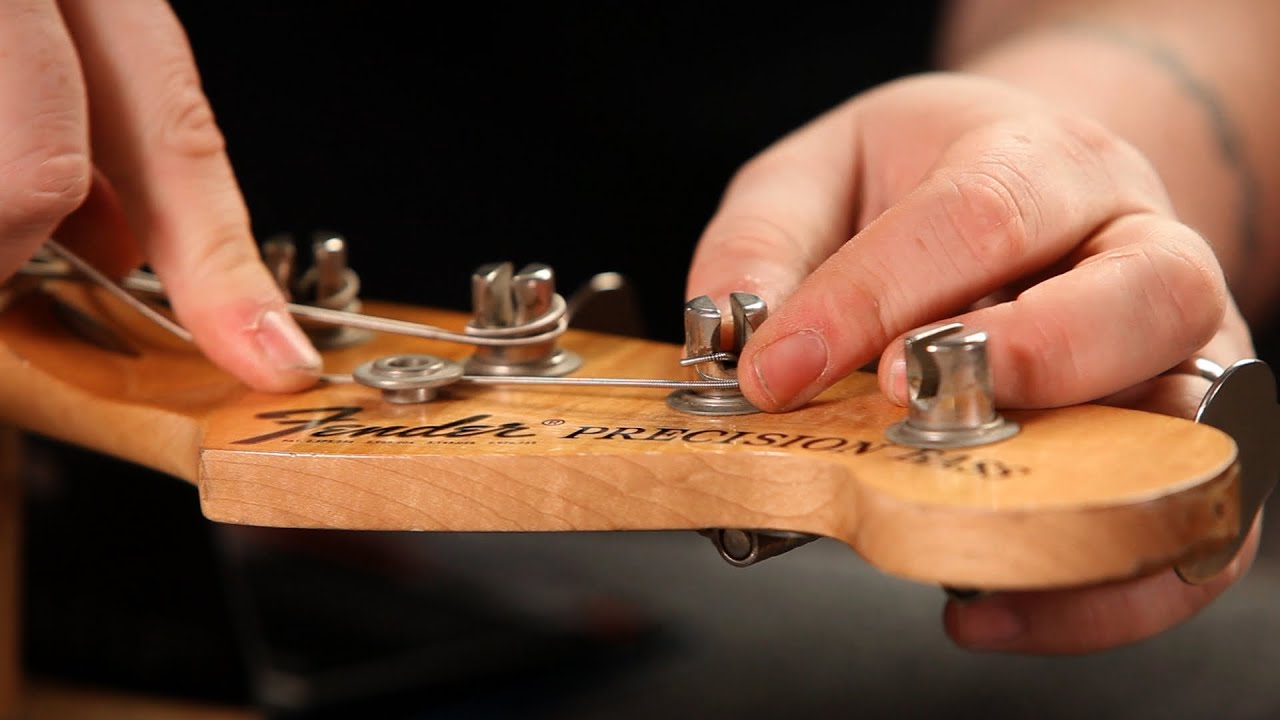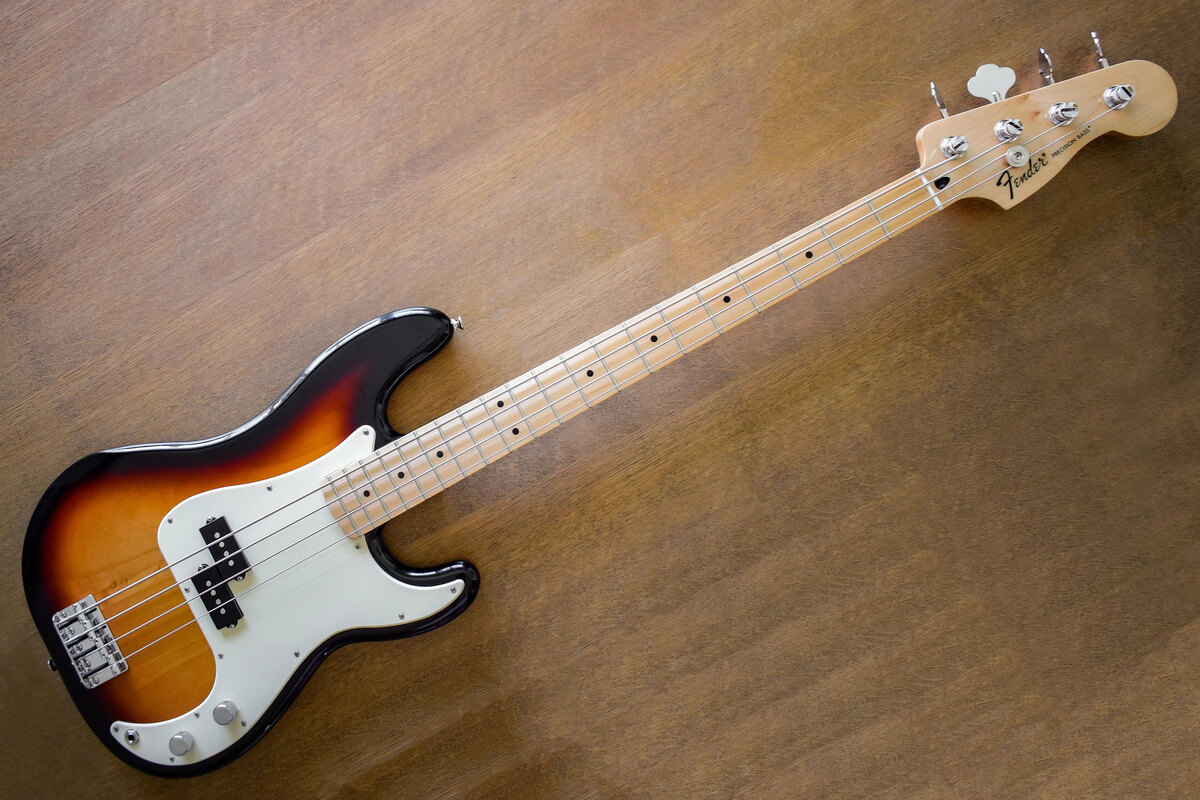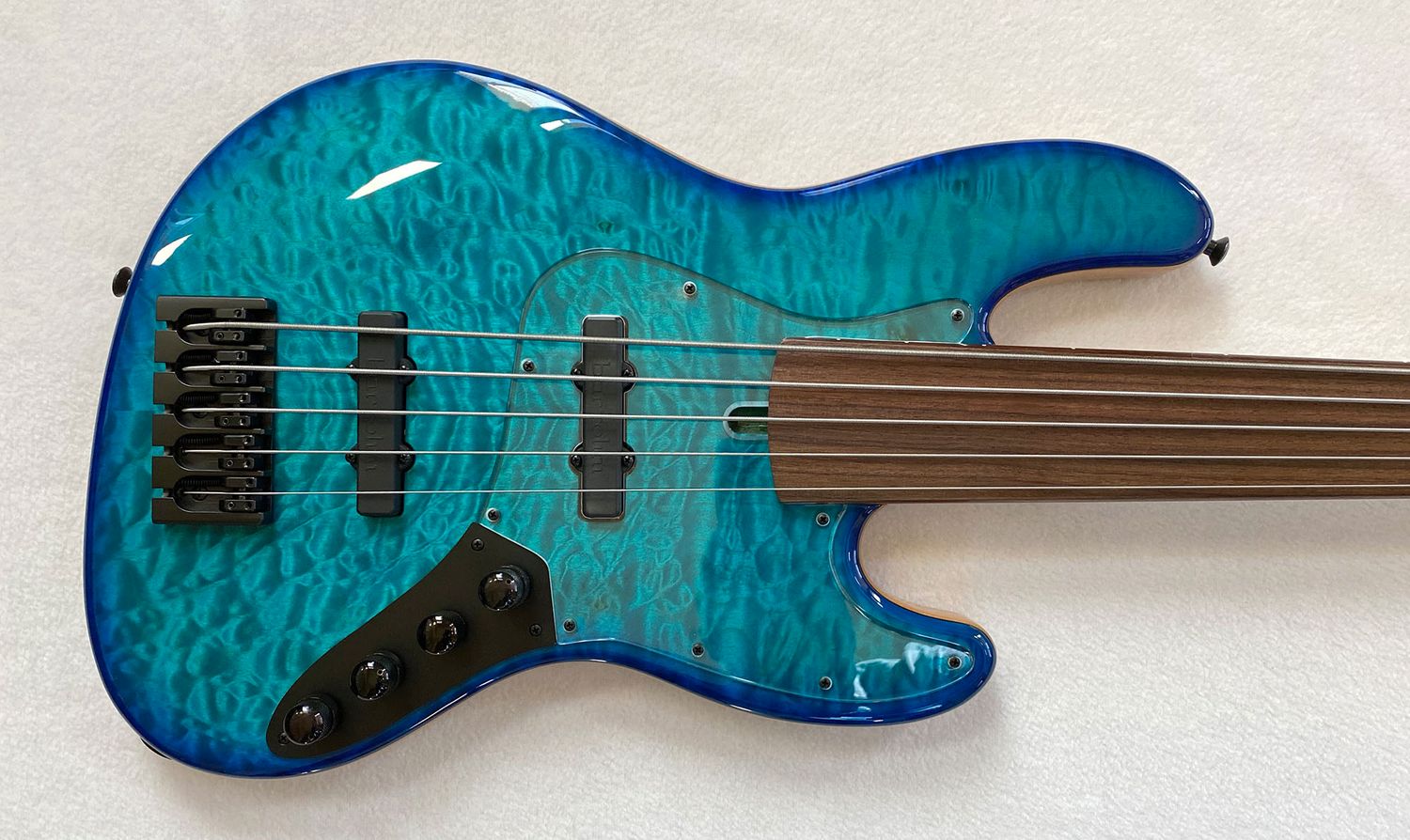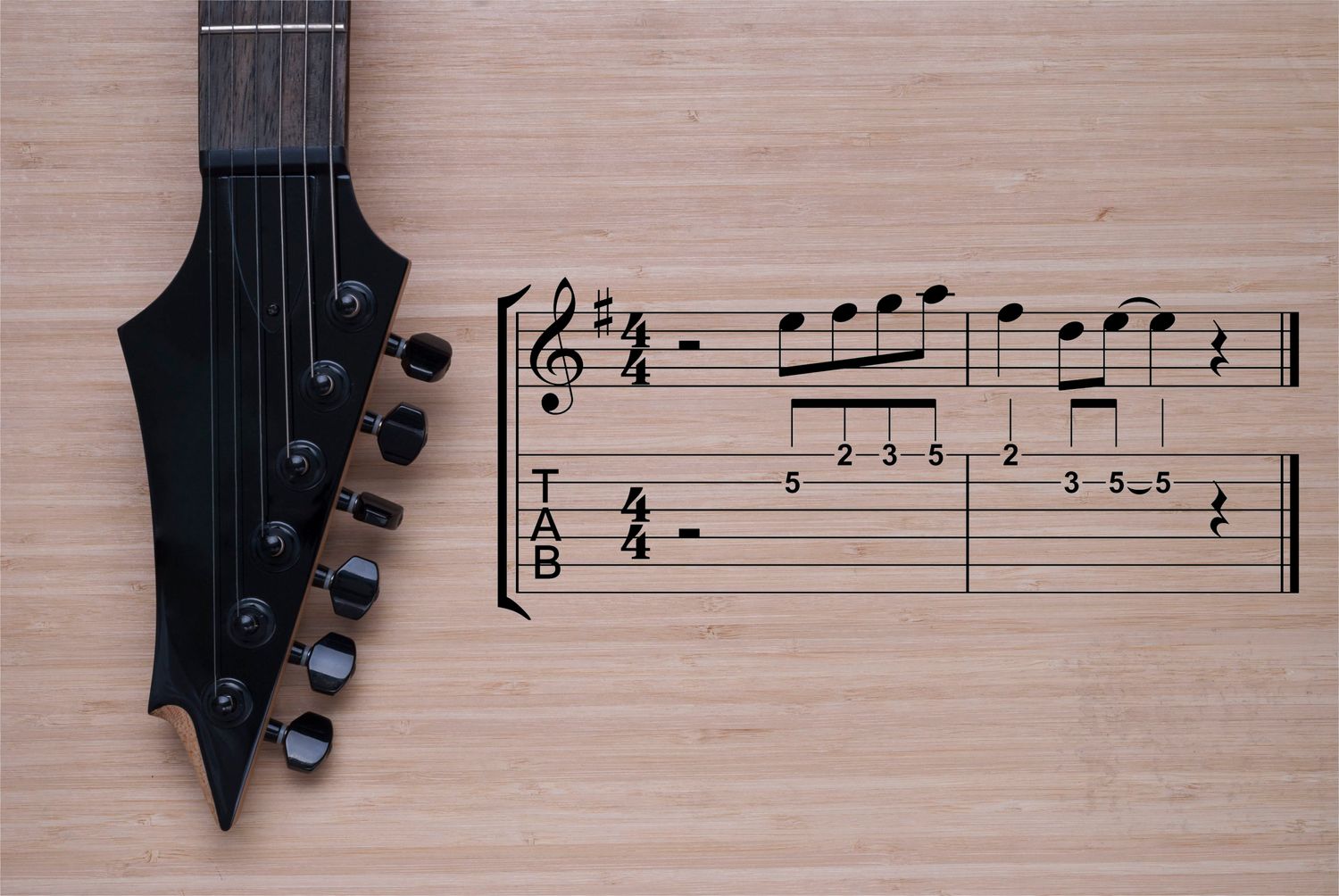Home>Instruments>Bass>How Long Is A Bass Guitar


Bass
How Long Is A Bass Guitar
Published: November 29, 2023
Discover the ideal length of a bass guitar and explore the various sizes available. Find the perfect bass for your musical journey.
(Many of the links in this article redirect to a specific reviewed product. Your purchase of these products through affiliate links helps to generate commission for AudioLover.com, at no extra cost. Learn more)
Table of Contents
Introduction
When it comes to musical instruments, the bass guitar is an essential component in creating the foundation and groove of a song. Whether you’re a musician, a music enthusiast, or simply curious about the instrument, you may find yourself wondering: How long is a bass guitar?
The length of a bass guitar plays a crucial role in its overall sound, playability, and comfort for the player. The length of the bass guitar is determined by various factors such as scale length, neck length, and body length. Understanding these dimensions and variations can provide valuable insight into choosing the right instrument for your musical journey.
In this article, we will explore the anatomy of a bass guitar and delve into the different factors that contribute to its length. We will also discuss standard bass guitar lengths, variations in lengths, and factors that can affect the overall length of a bass guitar. By the end, you will have a deeper understanding of the instrument and its unique characteristics.
So, whether you’re a beginner looking to purchase your first bass guitar or a seasoned player curious about the intricacies of instrument design, let’s embark on a fascinating journey to uncover just how long a bass guitar can be!
Anatomy of a Bass Guitar
Before we delve into the length of a bass guitar, it’s important to understand its basic anatomy. A bass guitar consists of several key components that work together to produce its distinctive sound and playability.
The first component to consider is the scale length. Scale length refers to the length of the strings from the nut to the bridge of the bass guitar. It is typically measured from the edge of the nut to the center of the 12th fret and then doubled. Scale length can vary between different bass guitars and plays a significant role in determining the instrument’s overall length.
Next, let’s discuss the neck length. The neck of a bass guitar is the long, slender section that houses the frets, tuning pegs, and truss rod. It is usually made of wood and extends from the body of the guitar to the headstock. The length of the neck can vary between different bass guitars and directly influences the overall length of the instrument. It is important to note that the neck length does not solely determine the scale length; it is a component of it.
The third component to consider is the body length. The body of a bass guitar is the part that rests against the player’s body when the instrument is being played. It can come in various shapes and sizes, including solid body, semi-hollow, and hollow body designs. The body length of a bass guitar contributes to its overall length and can vary depending on the specific design and construction of the instrument.
Overall, the combination of scale length, neck length, and body length determines the total length of a bass guitar. These three components work in harmony to create an instrument that is not only visually appealing but also comfortable to play and capable of producing rich, resonant tones.
Now that we have a basic understanding of the anatomy of a bass guitar, let’s take a closer look at the different lengths that are commonly found in standard bass guitars.
Scale Length
The scale length of a bass guitar refers to the length of the vibrating portion of the strings, which determines the pitch and tension of the instrument. It is typically measured from the nut to the bridge or saddle of the bass guitar.
The most common scale length for bass guitars is the “long scale,” which measures around 34 inches (86.36 cm). This scale length provides a balanced tone and is often favored by bassists playing a wide range of musical genres. The longer scale length offers increased string tension and can produce a more defined and punchy sound.
Shorter scale lengths, such as the “medium scale” at around 32 inches (81.28 cm) and the “short scale” at around 30 inches (76.20 cm), are also available. These shorter scale lengths can be beneficial for players with smaller hands or those who prefer a more comfortable playing experience. However, it’s important to note that shorter scale lengths tend to produce a slightly warmer and less articulate tone.
It’s worth mentioning that there are also bass guitars with extended scale lengths beyond the standard long scale. These include the “baritone scale” at around 35 inches (88.90 cm) and the “super long scale” at around 36 inches (91.44 cm) or more. These extended scale lengths are often used in specialized bass guitars designed for low-tuned or extended-range playing, catering to genres such as metal and progressive rock.
The scale length of a bass guitar not only affects the overall length of the instrument but also has an impact on the string tension, finger placement, and overall feel while playing. It’s important to choose a scale length that suits your playing style, preferences, and physical attributes to ensure a comfortable and enjoyable playing experience.
Now that we’ve explored the significance of scale length, let’s move on to discussing the next factor that contributes to the overall length of a bass guitar: the neck length.
Neck Length
The neck length of a bass guitar refers to the portion of the instrument that extends from the body to the headstock and houses the frets, tuning pegs, and truss rod. It plays a crucial role in determining both the playability and the overall length of the bass guitar.
There are different neck lengths available for bass guitars, ranging from short to long. The most common neck length seen in standard bass guitars is the “long-scale” neck, which typically measures around 34 inches (86.36 cm) in length. This length provides a comfortable playing experience for most bassists and is well-suited for a wide range of musical genres.
On the other hand, there are bass guitars with shorter neck lengths, known as “short-scale” bass guitars. These typically measure around 30 inches (76.20 cm) in length and can offer certain advantages for certain players. Short-scale bass guitars are often favored by those with smaller hands or beginners who find the shorter neck length more manageable and easier to navigate, especially when fretting and stretching across the fingerboard.
It’s important to note that the neck length doesn’t solely determine the scale length of the bass guitar. The scale length is a combination of factors including the neck length, fret placement, and bridge position. However, the length of the neck contributes to the overall length of the instrument.
When considering the neck length of a bass guitar, it’s essential to consider your playing style, hand size, and comfort level. If you have smaller hands or prefer a more compact instrument, a short-scale bass guitar may be more suitable for you. Conversely, if you’re looking for a more standard and versatile option, a long-scale bass guitar would be a better choice.
Now that we have explored the importance of neck length, let’s move on to discussing the body length of a bass guitar.
Body Length
The body length of a bass guitar refers to the portion of the instrument that rests against the player’s body during play. It is an integral part of the overall length and design of the bass guitar and can vary significantly depending on the specific model and style.
Bass guitar bodies come in various shapes and sizes, including solid bodies, semi-hollow bodies, and hollow bodies. Solid-body bass guitars, made from a single piece of wood, are the most common and provide a robust and resonant tone. Semi-hollow and hollow body bass guitars have hollow sections within the body, which can enhance the sound by adding warmth and resonance.
Different bass guitar models have varying body lengths, and this can impact the overall length of the instrument. For example, a Fender Precision Bass typically has a body length of around 18 inches (45.72 cm), while a Music Man StingRay bass may have a slightly longer body length of around 19 inches (48.26 cm). Short-scale bass guitars often have a compact body length to match the shorter neck length.
The body length not only affects the overall length but also contributes to the balance and ergonomics of the bass guitar. A well-balanced instrument will sit comfortably against the player’s body, allowing for better playability and reduced strain during extended playing sessions.
Additionally, the body length can influence the weight distribution of the bass guitar. Instruments with a longer body length may have more weight towards the lower end, while shorter body lengths may distribute the weight more evenly. This can impact how the instrument feels when playing in terms of neck dive and overall stability.
When choosing a bass guitar, considering the body length is important to ensure that the instrument feels comfortable and well-suited to your playing style and physique. It’s recommended to try out different bass guitars and body shapes to find the one that feels most natural and comfortable to you.
Now that we have explored the significance of body length, let’s move on to discussing the standard lengths found in bass guitars.
Standard Bass Guitar Lengths
Bass guitars come in various lengths, each with its own characteristics and advantages. While there is no definitive standard length for a bass guitar, several lengths have become widely accepted as the norm in the industry.
The most common and widely recognized length for a bass guitar is the “long scale” length, which measures around 34 inches (86.36 cm). This length is favored by many bassists and is often considered the standard for most bass guitars. The long scale length provides a balanced tone, comfortable string tension, and a versatile playing experience suitable for a wide range of musical genres.
Shorter than the long scale length is the “medium scale” length, which measures around 32 inches (81.28 cm). Bass guitars with medium scale lengths offer a slightly warmer and mellower tone compared to long-scale instruments. They are also popular among players with smaller hands and those seeking a more compact and comfortable playing experience.
The “short scale” length is even shorter, typically around 30 inches (76.20 cm). Bass guitars with short scale lengths are favored for their ease of playability, making them popular options for beginners, younger players, and those with smaller hands. The shorter scale length can result in a slightly warmer and thicker tone.
It’s important to note that although these lengths are commonly referred to as “standard,” there is still variability among different bass guitar models and manufacturers. Some bass guitars may deviate slightly from these lengths, and custom instruments can have unique lengths tailored to the player’s preferences.
When choosing a bass guitar, it’s crucial to consider your playing style, physical attributes, and the sound you wish to achieve. The standard lengths serve as a helpful guideline, but it’s always a good idea to try out different instruments to find the one that best suits your individual needs and preferences.
Now that we have explored the standard lengths, let’s discuss the variations that can be found in bass guitar lengths.
Variations in Bass Guitar Lengths
While there are standard lengths for bass guitars, it’s important to note that there are also variations and deviations from these norms. These variations can be found in both commercially available bass guitars and custom-built instruments.
One common variation is the “extra-long scale” length, which extends beyond the traditional long scale of 34 inches (86.36 cm). Bass guitars with extra-long scale lengths, often around 35 inches (88.90 cm) or more, are designed to accommodate players who prefer lower tunings or extended range capabilities. These instruments provide increased string tension, tighter response, and enhanced clarity in the lower register.
On the other hand, “shorter-than-standard” scale lengths are also available for bassists seeking a different playing experience. These bass guitars, with scale lengths shorter than the usual 34 inches, can range from 30 to 32 inches (76.20 to 81.28 cm). They offer a unique playing feel, often with a warmer and more rounded tone compared to longer scale lengths.
Beyond the scale length, variations in bass guitar lengths can also be seen in the neck length and body size. Some bass guitars may feature longer necks or larger bodies to cater to players seeking extended reach or enhanced resonance. Conversely, others may have shorter necks or more compact body designs for players desiring a lightweight and portable instrument.
Customization is another avenue for variations in bass guitar lengths. This allows musicians to work directly with luthiers or manufacturers to create instruments tailored to their exact specifications. From scale length adjustments to unique body shapes, custom-built bass guitars offer endless possibilities for players to achieve their desired lengths and overall design.
These variations in bass guitar lengths provide diverse options for musicians to explore and find the instrument that best suits their playing style and preferences. Whether it’s an extended-scale bass for low-tuned experimentation or a short-scale bass for enhanced comfort, these variations can greatly influence the sound, playability, and overall experience of playing the instrument.
Now that we have discussed the variations in bass guitar lengths, let’s move on to exploring the factors that can affect the overall length of a bass guitar.
Factors Affecting Bass Guitar Length
The overall length of a bass guitar is influenced by several factors, including scale length, neck length, body length, and design choices. Understanding these factors can provide valuable insight into the variations and choices available in bass guitar lengths.
Scale Length: The scale length directly affects the overall length of the bass guitar. Longer scale lengths, such as the common 34-inch (86.36 cm) long scale, result in longer instruments, while shorter scale lengths, like the 30-inch (76.20 cm) short scale, produce more compact bass guitars.
Neck Length: The length of the neck, including the fretboard and headstock, contributes to the overall length of the bass guitar. Shorter necks are often associated with shorter scale lengths, resulting in smaller and more lightweight instruments.
Body Length: The body design and size have an impact on the overall length. Different body shapes, such as jazz-style, precision-style, or unique custom designs, can alter the length and proportions of the bass guitar.
String Configuration: Bass guitars can come in various string configurations, such as four-string, five-string, or even extended-range basses with six or more strings. Instruments with additional strings may have longer scale lengths to accommodate the extra strings while maintaining proper string tension and tonal balance.
Bridge Design: The bridge of a bass guitar, particularly the position and construction, can affect the overall length. Different bridge designs can impact the string length, tension, and intonation, which in turn impacts the overall length of the bass guitar.
Manufacturer and Model: Different manufacturers and models may have their own design choices and specifications when it comes to bass guitar lengths. This can result in slight variations in overall length between different brands and models.
It’s important to consider these factors when choosing a bass guitar, as they can influence the instrument’s sound, playability, and overall feel. Each factor interacts and contributes to the overall length, ensuring a unique playing experience for musicians.
Now that we have explored the various factors affecting bass guitar length, let’s conclude our journey through the world of bass guitar lengths.
Conclusion
Understanding the length of a bass guitar is essential when considering which instrument to choose for your musical journey. The length of a bass guitar is influenced by various factors, including scale length, neck length, body length, and design choices. By exploring these factors, we can gain a deeper appreciation for the diversity and versatility of bass guitars.
The scale length of a bass guitar, such as the commonly used 34-inch long scale, determines the vibrating length of the strings and plays a significant role in the instrument’s overall sound and playability. Shorter scale lengths offer a more comfortable playing experience, whereas longer scale lengths provide increased string tension and punchier tones.
The neck length of a bass guitar contributes to its overall length and influences the playability and reach of the instrument. Shorter necks may be favored by those with smaller hands or those seeking a more compact playing experience, while longer necks may cater to players desiring extended reach and enhanced tonal possibilities.
The body length of a bass guitar, along with its shape and design, impacts the instrument’s balance, weight distribution, and resonance. Different body lengths offer unique playing experiences and tonal characteristics, whether it’s a solid-body bass for a robust and focused sound or a semi-hollow bass for added warmth and resonance.
While there are standard lengths for bass guitars, there are also variations and deviations beyond these norms. Extended-scale basses can accommodate lower tunings and extended range playing, while short-scale basses offer a more compact and comfortable option for players with smaller hands.
Other factors, such as string configurations, bridge designs, and the choices made by manufacturers, can also affect the overall length of a bass guitar and contribute to its unique characteristics.
Ultimately, selecting a bass guitar with the right length is a personal choice that should consider your playing style, physical attributes, and the sound you wish to achieve. Trying out different models and variations will allow you to find the instrument that feels comfortable, inspires creativity, and matches your musical aspirations.
Now armed with a deeper understanding of bass guitar lengths, go forth and explore the world of bass guitars with confidence and excitement. Whether you’re slapping funky basslines or holding down the low end in a rock band, may your bass guitar length be the perfect fit for your musical expression.











